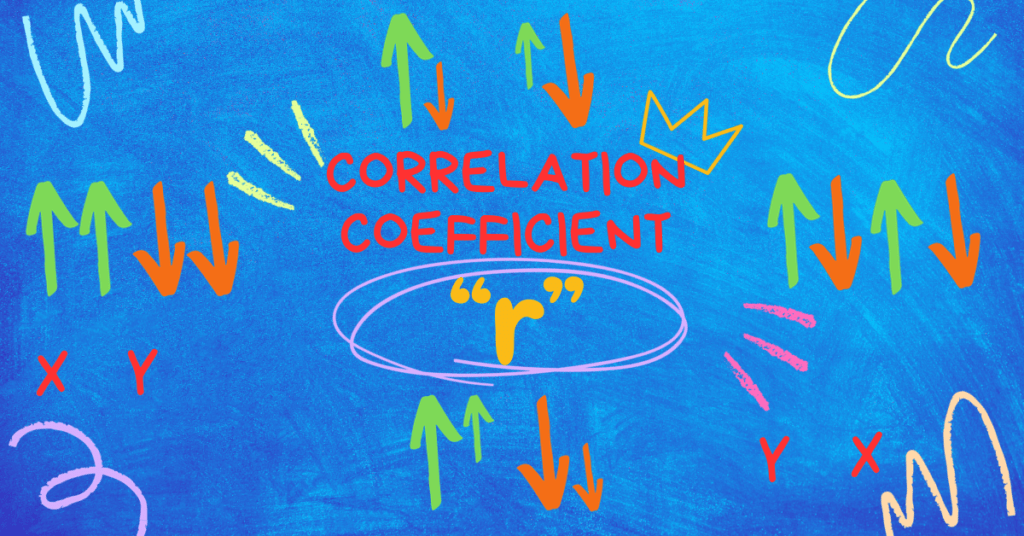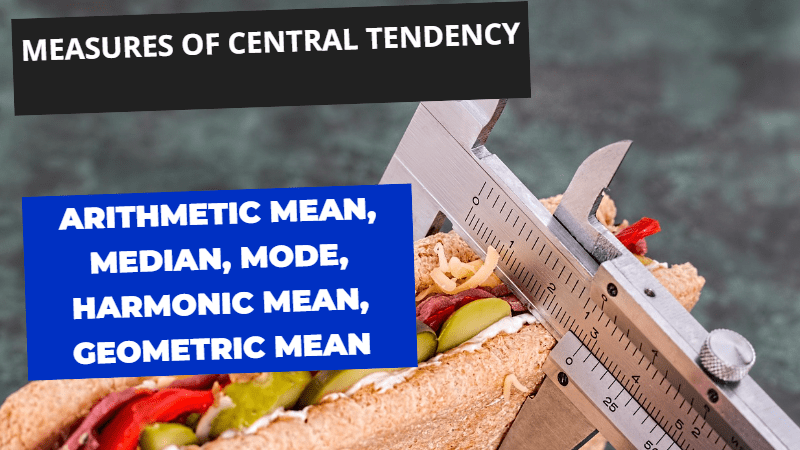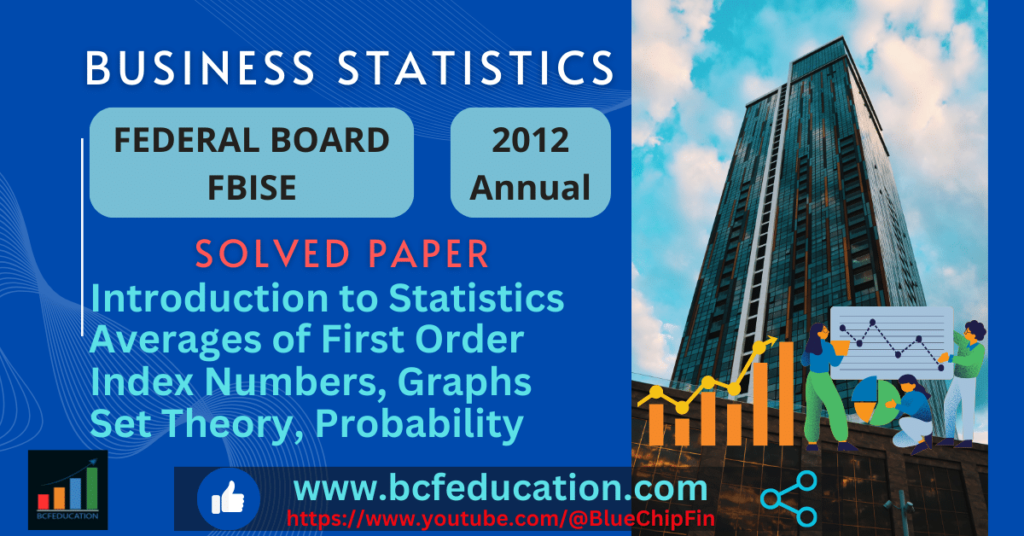Solved Paper Statistics I FBISE 2012, Dive into a comprehensive solution guide to the FBISE Statistics I 2011 paper! This blog post provides detailed explanations and step-by-step solutions for key topics like measures of central tendency, dispersion, data presentation, index numbers, correlation, regression, and time series. Whether you’re preparing for exams or reinforcing your understanding, this post is tailored to simplify concepts and help you excel in statistics. This topic is equally important for the students of statistics across all the major Boards and Universities such as FBISE, BISERWP, BISELHR, MU, DU, PU, NCERT, CBSE & others & across all the statistics, business & finance disciplines.
Table of Contents
Solved Paper Statistics I FBISE 2012
MCQS
| Q.1 Circle the Correct Option i.e. A/B/C/D. Each Part Carries 1 Mark. | |||||
| (i) | In the plural sense, statistics means: | ||||
| A. Methods | B. Numerical data | C. Sample Data | D. Population Data | ||
| (ii) | Statistics are: | ||||
| A. Aggregates of facts & figures | B. Always True | C. Always Continuous | D. Always Qualitative | ||
| (iii) | If there is no gap between consecutive classes, the limits are called: | ||||
| A. Class Limits | B. Class Boundaries | C. Class Intervals | D. Class Marks | ||
| (iv) | Histogram is a graph of: | ||||
| A. Frequency Distribution | B. Time Series | C. Qualitative Data | D. Ogive | ||
| (v) | The graph of a Time Series is called: | ||||
| A. Historigram | B. Histogram | C. Ogive | D. Sector Diagram | ||
| (vi) | If X̅ = 100 and Y = 2X – 200, then the mean of Y values will be: | ||||
| A.0 | B. 2 | C. 100 | D. 200 | ||
| (vii) | If all the items in a variable are non zero and non negative then: | ||||
| A.A.M > G.M > H.M | B. G.M > A.M > H.M | C. H.M > G.M > A.M | D. A.M < G.M < H.M | ||
| (viii) | The Mean is affected by change of: | ||||
| A. Origin | B. Scale | C. Both A and B | D. Units | ||
| (ix) | If the distribution has two modes then it is called: | ||||
| A. Uni-modal | B. Bi-modal | C. Tri-modal | D. None of these | ||
| (x) | The degree to which numerical data tend to spread out about an average value is called: | ||||
| A. Constant | B. Flatness | C. Variation | D. Skewness | ||
| (xi) | The variance of 7, 7, 7, 7, 7, 7 is: | ||||
| A. 7 | B. (7)² | C. 0 | D. | ||
| (xii) | For a symmetrical distribution: | ||||
| A. β1 > 0 | B. β1 < 0 | C. β1 = 0 | D. β1 = 3 | ||
| (xiii) | Index Number for base period is always taken as: | ||||
| A. 100 | B. One | C. 200 | D. Zero | ||
| (xiv) | Another name of consumer’s price index (C.P.I) number is: | ||||
| A. Wholesale Price Index number | B. Cost of living Index number | C. Sensitive | D. Composite | ||
| (xv) | When two variables move in the same direction, then the correlation is: | ||||
| A. Positive | B. Negative | C. Fractional | D. None of these | ||
| (xvi) | There are _________ main components of a Time Series: | ||||
| A. Three | B. Four | C. Five | D. None of these | ||
| (xvii) | The sequence which follows irregular or random pattern of variation is called: | ||||
| A. Signals | B. Noise | C. Model | D. Trend | ||
Short Questions
(i) Differentiate between Descriptive and Inferential Statistics.
Answer:
Descriptive Statistics
Descriptive statistics is a branch of statistics in which data is presented in the form of tables, graphs and charts. Measures of central tendency and dispersion is also a part of descriptive statistics. The aim of descriptive statistics is to present the data in informative way.
Example: Teacher gathering data of student’s marks, calculates averages, variation and presenting in graph.
Inferential Statistics
Inferential statistics is also a branch of statistics in which sample data is used to predict about population. Inferential statistics is used to predict the future trend and fluctuations. Key functions of inferential statistics is to make hypothesis, regression analysis etc.
(ii) Distinguish between Histogram and Historigram.
Answer:
Histogram is a graph of frequency distribution in which class boundaries with suitable width is taken on X-axis where as respective frequencies are taken on Y-axis. In Histogram relative frequencies are shown in the shape of adjacent rectangular bars.
Whereas graph of Time Series or historical series is called historigram.
(iii) Differentiate between Ungrouped and Grouped data.
Answer:
Ungrouped Data
First hand, newly collected, primary data is called ungrouped data or data which is not collected by someone previously is called ungrouped data.
Grouped Data
Second hand, previously collected, secondary data is called grouped data or data which is collected by someone previously is called grouped data.
(iv)Differentiate between Class limits and Class boundaries.
Answer:
Class Limit
Range of the class is determined by class limit in the frequency distribution. It has two limits, LCL lower class limit and UCL upper class limit. For example in below given class, 146,151,156,161 and so on LCL lower class limits whereas 150, 155, 160, 165, 170 and so on are UCL upper class limits.
Example of Class limits
| Height | Number of Students | Class Boundaries |
| 146–150 | 1 | 145.5–150.5 |
| 151–155 | 2 | 150.5–155.5 |
| 156–160 | 6 | 155.5–160.5 |
| 161–165 | 3 | 160.5–165.5 |
| 166–170 | 6 | 165.5–170.5 |
| 171–175 | 1 | 170.5–175.5 |
| 176–180 | 1 | 175.5–180.5 |
Class Boundaries
The class boundary eliminates the gaps between adjacent classes by defining the real limits of each class. It is the mid-point of the gap between the upper limit of one class and the lower limit of the next class. It has also two extremes LCB lower class boundary and UCB upper class boundary. First we subtract the upper class limit from the lower class limit of the second class. Divide the difference by two. Answer should be subtracted from the lower class limits and added to the upper class limits will produce class boundaries as given in above table. In the table above left sided values are lower class boundaries whereas right sided values are upper class boundaries.
(v)List the main parts of a table.
Answer:
- Table Number
- Title of the Table
- Caption
- Stub
- Body
- Head Note
- Foot Note
- Source Note
(vi) A variable Y is determined from a variable X by the equation Y = 10 – 4X. Find Y when X = -3, -2, -1, 0, 1, 2, 3, 4, 5
Solution:
| x | y = 10 – 4x | y |
| -3 | y = 10 – 4(-3) | 22 |
| -2 | y = 10 – 4(-2) | 18 |
| -1 | y = 10 – 4(-1) | 14 |
| 0 | y = 10 – 4(0) | 10 |
| 1 | y = 10 – 4(1) | 6 |
| 2 | y = 10 – 4(2) | 2 |
| 3 | y = 10 – 4(3) | -2 |
| 4 | y = 10 – 4(4) | -6 |
| 5 | y = 10 – 4(5) | -10 |
| ∑X=9 | ∑Y=54 |
(vii) The mean of 15 values is 10. If one more value is included, then mean becomes 12. Find the value included.
Solution
![]()
![]()
![]()
![]()
![]()
![]()
The new value is 192 – 150 = 42
(viii) The geometric mean of a series of 4 items is 10.2, find the product of all four items.
Solution
![]()
Taking square root on both sides
![]()
![]()
So product of 4 numbers is=10824.3216
(ix) If for 10 observations ∑(X – 23) = -17, then find the value of mean.
Solution
![]()
![]()
(x) If mean and geometric mean of two numbers are 20 and 16, respectively, then find the value of H.M.
Solution
Let a and b be the numbers
Then
![]()
![]()
![]()
So
![]()
![]()
![]()
![]()
Now Substitute the values:
![]()
![]()
(xi) The mean of 200 items is 48 and their standard deviation is 3. Find ∑x and ∑x².
Solution:
![]()
![]()
![]()
![]()
![]()
![]()
![]()
![]()
![]()
(xii) Given mean = 200; C.V = 7. Find the value of variance.
Solution:
![]()
![]()
![]()
![]()
![]()
![]()
![]()
![]()
(xiii) Differentiate between Fixed base and chain base method of Index number.
Answer
In fixed base method, base period remains fixed whereas in chain base method base period does not remain fixed. On the other hand in fixed base method, we calculate price relative whereas in chain base method, we calculate link relative and then we calculate chain index.
![]()
![]()
(xiv) If Paasche’s Index number = 74.76 and Fisher’s Index Number = 75.76, then find the Laspeyre’s Price Index Number.
Solution
Paasche’s Index No = 74.76, Fisher’s Index = 75.76
As we know that:
![]()
![]()
![]()
![]()
Taking square root on both sides
![]()
![]()

(xv) Explain the term Regressand and Regressor.
Answer:
An independent variable is also known as a predictor, regressor or explanatory variable. On the other hand a dependent variable is also known as a response variable, regressand, predicted or explained variable.
(xvi) Interpret the meaning when:
| r=+1 | r=-1 | r=0 |
| r=-0.98 | r=0.2 | r=2 |
Solution:
| r=Perfectly Positive | r=Perfectly Negative | r=Zero Correlation |
| r=Negative | r=Positive | r=Impossible |
(xvii) Given r = 0.8, Sxy=20, Sx = 4, Find Sy.
Solution:
![]()
![]()
![]()
![]()
![]()
![]()
(xviii) Given Y = 10, 8, 6 and X = 0, 1, 2. Find the Sample Correlation Co-efficient.
Solution:
| X | Y | XY | X² | Y² |
| 0 | 10 | 0 | 0 | 100 |
| 1 | 8 | 8 | 1 | 64 |
| 2 | 6 | 12 | 4 | 36 |
| ∑X = 3 | ∑Y = 24 | ∑XY = 20 | ∑X² = 5 | ∑Y² = 200 |
![]()
![]()
![]()
![]()
![Rendered by QuickLaTeX.com \[ \mathbf{\sigma x}\mathbf{=}\sqrt{\left\lbrack \frac{\mathbf{\sum}\mathbf{x}^{\mathbf{2}}}{\mathbf{n}}\mathbf{-}\mathbf{\ }\left( \frac{\mathbf{\sum}\mathbf{x}}{\mathbf{n}} \right)^{\mathbf{2}} \right\rbrack}\ \]](https://bcfeducation.com/wp-content/ql-cache/quicklatex.com-add3ab76125aa2c14ce46ab6199804a5_l3.png)
![Rendered by QuickLaTeX.com \[ \mathbf{\sigma x}\mathbf{=}\sqrt{\left\lbrack \frac{\mathbf{5}}{\mathbf{3}}\mathbf{-}\mathbf{\ }\left( \frac{\mathbf{3}}{\mathbf{5}} \right)^{\mathbf{2}} \right\rbrack}\ \]](https://bcfeducation.com/wp-content/ql-cache/quicklatex.com-9496893e73da7d3643857274f99a73e9_l3.png)
![]()
![]()
![]()
![Rendered by QuickLaTeX.com \[ \mathbf{\sigma y}\mathbf{=}\sqrt{\left\lbrack \frac{\mathbf{\sum}\mathbf{y}^{\mathbf{2}}}{\mathbf{n}}\mathbf{-}\mathbf{\ }\left( \frac{\mathbf{\sum}\mathbf{y}}{\mathbf{n}} \right)^{\mathbf{2}} \right\rbrack}\ \]](https://bcfeducation.com/wp-content/ql-cache/quicklatex.com-9307cbc13f35afee909762961324e231_l3.png)
![Rendered by QuickLaTeX.com \[ \mathbf{\sigma y}\mathbf{=}\sqrt{\left\lbrack \frac{\mathbf{200}}{\mathbf{3}}\mathbf{-}\mathbf{\ }\left( \frac{\mathbf{24}}{\mathbf{3}} \right)^{\mathbf{2}} \right\rbrack}\ \]](https://bcfeducation.com/wp-content/ql-cache/quicklatex.com-1230c09eff24da4c2353dae5c58564e8_l3.png)
![]()
![]()
![]()
![]()
![]()
![]()
(xix) Give ∑X = 0, ∑Y = 245, ∑X² = 28, ∑XY = 66 and n = 7, Fit a Linear Trend.
Solution:
![]()
![]()
![]()
So Ŷ = a + bx = 35 + 2.35X
Extensive Questions
Q.3 (a) Following data has been obtained from a frequency distribution of a Continuous Variable X after making the substitution U= (X-136.5)/2…………….Find mean, median and mode of the variable x.
Q.3 (a) Following data has been obtained from a frequency distribution of a Continuous Variable X after making the substitution:
![]()
| U | -4 | -3 | -2 | -1 | 0 | 1 | 2 | 3 |
| f | 2 | 5 | 8 | 18 | 22 | 13 | 8 | 4 |
Find mean, median and mode of the variable x.
Solution (a)
Here A= 136.5, h = 2
Calculation of X
![]()
(-4)2=X-136.5
-8=X-136.5
X=-8+136.5
X=128.5
| U | f | X | Class Boundaries | fX | C.f |
| -4 | 2 | 128.5 | 127.5—-129.5 | 257 | 2 |
| -3 | 5 | 130.5 | 129.5—-131.5 | 652.5 | 7 |
| -2 | 8 | 132.5 | 131.5—-133.5 | 1060 | 15 |
| -1 | 18 | 134.5 | 133.5—-135.5 | 2421 | 33 |
| 0 | 22 | 136.5 | 135.5—-137.5 | 3003 | 55 |
| 1 | 13 | 138.5 | 137.5—-139.5 | 1800.5 | 68 |
| 2 | 8 | 140.5 | 139.5—-141.5 | 1124 | 76 |
| 3 | 4 | 142.5 | 141.5—-143.5 | 570 | 80 |
| 80 | 10888 | ||||
| ∑f = | ∑fX = |
![]()
![]()
n/2=80/2=40, which falls in c.f of 55 so model class is l=135.5, h=2, f=22 & C=33
![]()
![]()
![]()
Maximum frequency is 22 so model class:
![]()
![]()
![]()
![]()
![]()
![]()
(b) If the mode and mean of a moderately asymmetrical series are 16 and 20.2 respectively, compute the value of median.
Solution (b)
Mode = 3 Median – 2 Mean
16 = 3 Median – 2(20.2)
16 = 3 Median – 40.4
3(Median) = 16 + 40.4
3(Median) = 56.4
Median = 56.4/3
Median = 18.8
Q.4 (a) The weight measured in grams of 20 eggs is given below:
65, 68, 60, 76, 65, 74, 58, 56, 61, 57, 63, 64, 72, 66, 65, 67, 65, 63, 67, 67
Find the percentage of observations lying within the limits:
(i) X̅ + S (ii) X̅ ± 3S
Solution
| X | X² |
| 65 | 4225 |
| 68 | 4624 |
| 60 | 3600 |
| 76 | 5776 |
| 65 | 4225 |
| 74 | 5476 |
| 58 | 3364 |
| 56 | 3136 |
| 61 | 3721 |
| 57 | 3249 |
| 63 | 3969 |
| 64 | 4096 |
| 72 | 5184 |
| 66 | 4356 |
| 65 | 4225 |
| 67 | 4489 |
| 65 | 4225 |
| 63 | 3969 |
| 67 | 4489 |
| 67 | 4489 |
| 1299 | 84887 |
| ∑X = | ∑X² = |
![]()
![Rendered by QuickLaTeX.com \[ \mathbf{S = \ }\sqrt{\left\lbrack \frac{\mathbf{\sum}\mathbf{x}^{\mathbf{2}}}{\mathbf{n}}\mathbf{-}\left( \frac{\mathbf{\sum x}}{\mathbf{n}} \right)^{\mathbf{2}} \right\rbrack}\ \]](https://bcfeducation.com/wp-content/ql-cache/quicklatex.com-c26befb68dc76129385023ddcad03064_l3.png)
![]()
![]()
(i) X̅ + S = 64.95 + 5 (limits 64.95 —-69.95)
9 observations fall in above range e.g. 65 to 68 So Percentage = (9/20)100 =45%
(ii) X̅ ± 3S = 64.95 ± 3(5) = 64.95 ± 15 (Limits 49.95 —–79.95)
All the Observations fall in above limit so percentage is 100%
(b) From the following data, find index numbers for 2002 with 2001 as base year by:
(i) Laspeyre’s formula
(ii) Paasche’s formula
(iii) Show numerically that Fisher’s Ideal formula is the geometric mean (G.M) of the above two:
| Items | Prices | Quantities | ||
| 2001 | 2002 | 2001 | 2002 | |
| A | 64 | 75 | 270 | 290 |
| B | 40 | 45 | 124 | 144 |
| C | 18 | 21 | 130 | 137 |
| D | 58 | 68 | 185 | 200 |
Solution
| Article | 2001 | 2002 | ||||||
| Price (Po) | Quantity (qo) | Price (P1) | Quantity (q1) | poqo | p1qo | p1q1 | poq1 | |
| A | 64 | 270 | 75 | 290 | 17280 | 20250 | 21750 | 18560 |
| B | 40 | 124 | 45 | 144 | 4960 | 5580 | 6480 | 5760 |
| C | 18 | 130 | 21 | 137 | 2340 | 2730 | 2877 | 2466 |
| D | 58 | 185 | 68 | 200 | 10730 | 12580 | 13600 | 11600 |
| Sum | 35310 | 41140 | 44707 | 38386 | ||||
| ∑poqo = | ∑p1qo = | ∑p1q1 = | ∑poq1 = | |||||
![]()
![]()
![]()
![]()
![]()
![]()
![]()
![]()
![]()
Q.5 Suppose that a shoe manufacturer takes a random sample of his production in order to examine the relationship between wearing performance and cost:
| Cost of Production (X) | Months of Wear (Y) |
| 15 | 10 |
| 20 | 12 |
| 10 | 09 |
| 10 | 08 |
| 10 | 06 |
- Compute the regression lines of Y on X and X on Y.
- From the above, show that Correlation Coefficient is the Geometric Mean between two regression coefficients.
Solution (i)
| Cost of Production (X) | Months of Wear (Y) | XY | X² | Y² |
| 15 | 10 | 150 | 225 | 100 |
| 20 | 12 | 240 | 400 | 144 |
| 10 | 9 | 90 | 100 | 81 |
| 10 | 8 | 80 | 100 | 64 |
| 10 | 6 | 60 | 100 | 36 |
| 65 | 45 | 620 | 925 | 425 |
| ∑X = | ∑Y = | ∑XY= | ∑X²= | ∑Y²= |
![]()
![]()
![Rendered by QuickLaTeX.com \[ \mathbf{\sigma x}\mathbf{=}\sqrt{\left\lbrack \frac{\mathbf{\sum}\mathbf{x}^{\mathbf{2}}}{\mathbf{n}}\mathbf{-}\mathbf{\ }\left( \frac{\mathbf{\sum}\mathbf{x}}{\mathbf{n}} \right)^{\mathbf{2}} \right\rbrack}\ \]](https://bcfeducation.com/wp-content/ql-cache/quicklatex.com-add3ab76125aa2c14ce46ab6199804a5_l3.png)
![Rendered by QuickLaTeX.com \[ \mathbf{\sigma x}\mathbf{=}\sqrt{\left\lbrack \frac{\mathbf{925}}{\mathbf{5}}\mathbf{-}\mathbf{\ }\left( \frac{\mathbf{65}}{\mathbf{5}} \right)^{\mathbf{2}} \right\rbrack}\ \]](https://bcfeducation.com/wp-content/ql-cache/quicklatex.com-071a588b0ebc123c673d3b606e5d27d5_l3.png)
![]()
![]()
![]()
![Rendered by QuickLaTeX.com \[ \mathbf{\sigma y}\mathbf{=}\sqrt{\left\lbrack \frac{\mathbf{\sum}\mathbf{y}^{\mathbf{2}}}{\mathbf{n}}\mathbf{-}\mathbf{\ }\left( \frac{\mathbf{\sum}\mathbf{y}}{\mathbf{n}} \right)^{\mathbf{2}} \right\rbrack}\ \]](https://bcfeducation.com/wp-content/ql-cache/quicklatex.com-9307cbc13f35afee909762961324e231_l3.png)
![Rendered by QuickLaTeX.com \[ \mathbf{\sigma y}\mathbf{=}\sqrt{\left\lbrack \frac{\mathbf{425}}{\mathbf{5}}\mathbf{-}\mathbf{\ }\left( \frac{\mathbf{45}}{\mathbf{5}} \right)^{\mathbf{2}} \right\rbrack}\ \]](https://bcfeducation.com/wp-content/ql-cache/quicklatex.com-840e084019611dea31b6834fa8124b1c_l3.png)
![]()
![]()
![]()
![]()
![]()
![]()
![]()
![]()
![]()
![]()
![]()
![]()
![]()
![]()
![]()
Regression Equation Y on X
![]()
(Y – 9) = 0.4375(X – 13)
(Y – 9) = 0.4375X – 5.6875
Y = 0.4375X – 5.6875 + 9
Y = 0.4375X + 3.3125 or Ŷ = a + bx which will be Ŷ = 3.3125 + 0.4375X
Regression Equation X on Y
![]()
(X – 13) = 1.75(Y – 9)
(X – 13) = 1.75Y – 15.75
X = 1.75Y – 15.75 + 13
X = 1.75Y–2.75 or X̂ = a + by which will be X̂ = -2.75 + 1.75y
(ii)
![]()
![]()
![]()
![]()
Related Articles
Statistics I Solved Paper FBISE 2008
Statistics I Solved Paper FBISE 2009
Statistics I Solved Paper FBISE 2010






